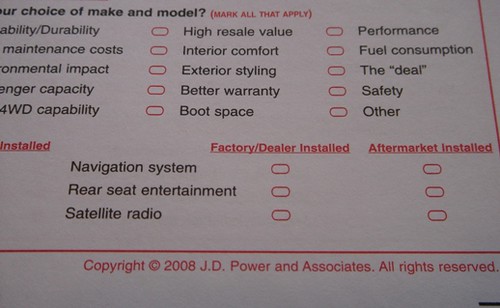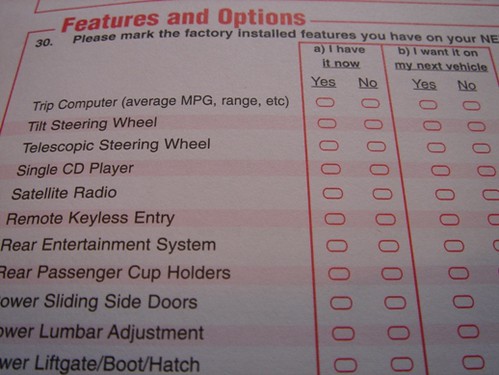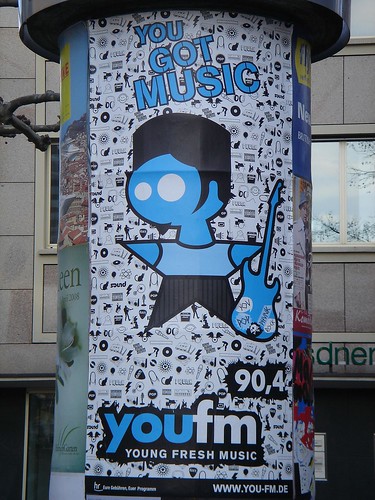
Of all the questions surrounding the DAB strategy, the “How do we get DAB in-car?” must surely be one of the most contentious (along with “Do we need to set an analogue switch-off date?”).
I must admit, I don’t share some of my colleagues’ concerns about the progress of DAB towards being a standard line-fit item on Europe’s cars. I remember how long it took CD players to be ubiquitous in cars, almost a decade after we all had them in our houses (and quite a few of us had them to carry around). I think the evidence is there that things are moving along OK, and once there’s a more defined commitment to DAB from Germany, France, Scandinavia et al., the market-size requirements seem to be fulfilled.
But now I’m a bit more concerned that the automotive industry is making decisions based on incorrect research, to the extent that they might well be getting a completely inaccurate picture of people’s desire to have DAB in their cars.
About a year ago, I bought a new car. Nothing remarkable, a particularly dull brand and a particularly dull model. Of course, I asked if DAB was a dealer fit option. The dealer said that wasn’t possible, but that he’d had a lot of people asking about it. (Good sign). Annoyingly, it’s one of those “fully integrated” dashboards, which makes it virtually impossible to fit a radio myself. Thankfully the PURE Highway arrived, and that solved that problem rather neatly.
Now, a year on, I’ve received a JD Power survey to complete. If you’re not aware, the JD Power survey is the Gold Standard of car surveys, and it is relentlessly thorough. (If timing had been better, I would have scanned the blank one in). It’s clear that a lot of the data goes straight back to the manufacturers.
So let’s be clear; a UK based survey company (Guildford), sends a UK based customer a survey form about a UK purchased and registered car.
To say I was taken aback by Question 14.7 would be an understatement

Does your NEW vehicle have…
Satellite Radio : (factory/dealer fit OR aftermarket installed)
After diligently crossing “Satellite” out and writing in “DAB Digital”, I ticked the “aftermarket installed” box.
Then there are hundreds of questions about every aspect of the car, has it ever gone wrong, do it like it, could I like it more. And towards the end, another killer question:

Q30 Features and Options
Please mark the factory installed features you have on your NEW vehicle now and those you want on your next vehicle (my emphasis)
[massive list of items – DVD players, Sat Nav systems, Extra bottle holders, Power sliding doors, remote keyless entry, memory seats, headlamp washers]
27. Satellite Radio : I HAVE it now (Y/N) I WANT IT on my next radio (Y/N)
What does this mean in the UK? Clearly, they’ve cut’n’pasted the US questionnaire, but what on earth does a UK consumer write here, and more interestingly, how are these answers interpreted by the car companies deciding whether to fit DAB Digital Radio into cars in Europe?
In the worst-case scenario, poor confused UK customer says un-equivocally “NO I don’t have Satellite Radio, and NO I Don’t Want One in my next car…. because I’ve never heard of ‘Satellite Radio’ and I want a DAB one, please”. Of course, there’s no way of capturing the second part of that statement. The form just says “Do you have one – NO, (never heard of it) ; Do you want one – NO (ditto)”.
So under what heading does that answer appear as in the cross-tabs presented to the manufacturer. Does it even make it there if nobody says they’re interested? When running the “Top 10 most demanded features on your next car”, satellite radio isn’t going to rate, but neither is DAB.
Next time a manufacturer tells me there’s no evidence of demand for digital radios in cars, I shall point them at the JD Power survey. In the meantime, I’ve written a letter to JD Power asking them what it’s all about; if I get a reply, I’ll post it here.
(Update – miraculously, I received another, blank, questionnaire today – so I’ve replaced the one I’d scribbled all over).

